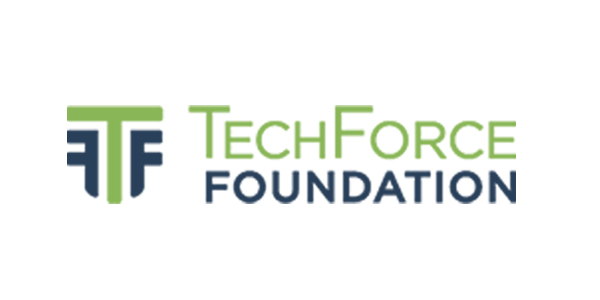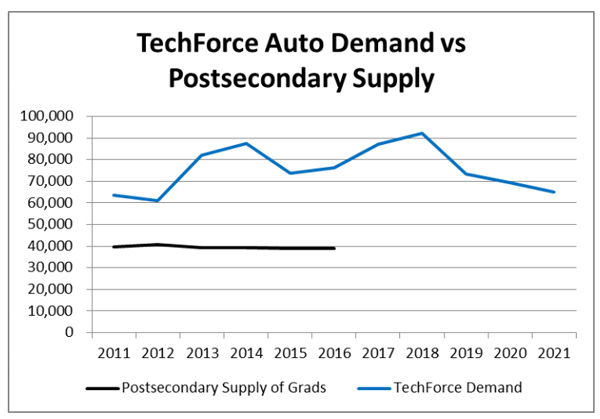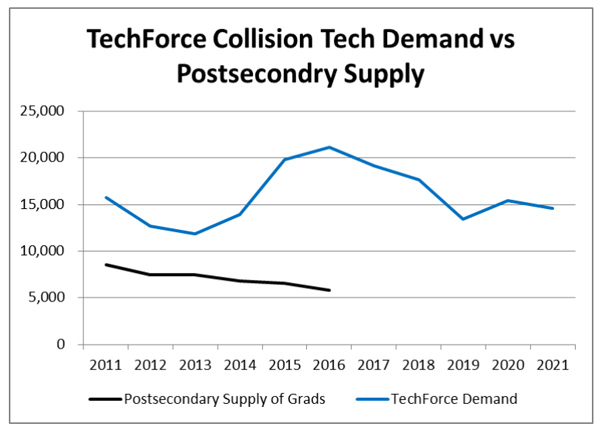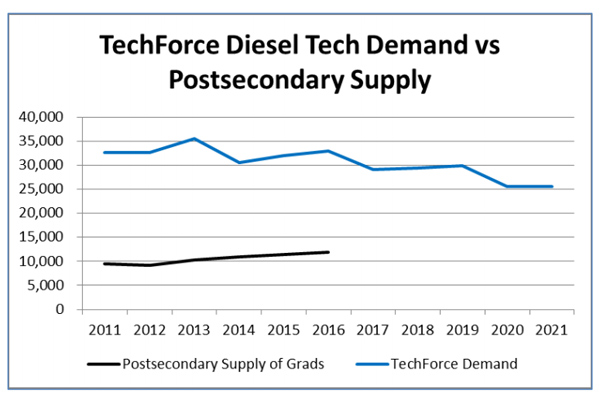
A new study from TechForce Foundation, a non-profit organization focused on championing and aiding aspiring transportation technicians, indicates the number of new entrant vehicle technicians continues to decline.
According to the report — titled the “Transportation Technician Supply Report” — TechForce found there were 8,566 completions in 2011 versus 5,791 in 2016. Based on an analysis of National Center for Education Statistics’ (NCES) 2011-2016 data, TechForce’s report indicates postsecondary supply of new entrant vehicle technicians has not kept up with the spike in demand. Although the shortage has been ongoing, it became more severe in 2013 and the gap between supply and demand has continued to increase through the present. New entrant technicians are those needed to fill the growth in new positions in the occupation as well as replace those who leave the occupation. They are distinguished from experienced technicians who may move between employers but don’t add to the overall trained workforce in the occupation.
“Our country and education system have divested in high school auto shops and stigmatized trade school education which is killing the trades,” said Jennifer Maher, CEO/executive director of TechForce. “A big part of the problem is the outdated image of the ‘grease monkey’ mechanic that students and their parents, teachers and counselors may have. Today’s techs are well paid, highly skilled, hands-on problem solvers who are not burdened by massive school debt like their four-year school counterparts. As we change this image we can get more students interested in becoming technicians.”
The report shows that auto tech postsecondary completions have been declining since 2013 and the supply of postsecondary auto graduates decreased by 1,829 completions in 2016 from 2012. TechForce estimates 38,829 graduates for 2016 in contrast to the projected Bureau of Labor Statistics (BLS) new entrant demand of 75,900.

On the collision side, collision technicians has also been steadily declining over the past six years. The projected BLS annual new entrant demand is 17,200 collision technicians compared to supply of 5,791 completions in 2016.

However, total postsecondary completions for diesel programs have increased over the same period. The projected BLS new entrant demand for diesel technicians is 28,300 annually against a supply of 11,966 in 2016.

Additionally, private sector institutions have experienced the greatest decline in graduate, but public two-year institutions (primarily community colleges) have increased substantially.
Greg Settle, the other co-author of the report and TechForce’s director of national initiatives, said, “With only a small percentage of students interested in going into a skilled trade versus seeking a college degree, the competition among all the skilled trades for those students is fierce. If you look at auto technicians, they can make a very solid, middle-class income. However, starting wages for auto technicians are among the lowest across the skilled trades, and that is often what young and men and women will focus on when making a career decision. Add to that the fact that entry-level technicians are expected to arrive at their first job with their own tools and it does not make the career very attractive, compared with other choices.”
Doug Young, co-author of the report and managing director of Wilcap L.L.C, added, “Changing perceptions will require building a pipeline into the industry—before parents and students have committed to ‘college for all,’ before students have decided that they aren’t interested in STEM subjects in high school, and before the old perceptions eliminate any interest among parents and career counselors in learning more about the opportunities in the transportation technician occupations.”
To read the full report, click here. For more information about TechForce Foundation, visit techforcefoundation.org.
